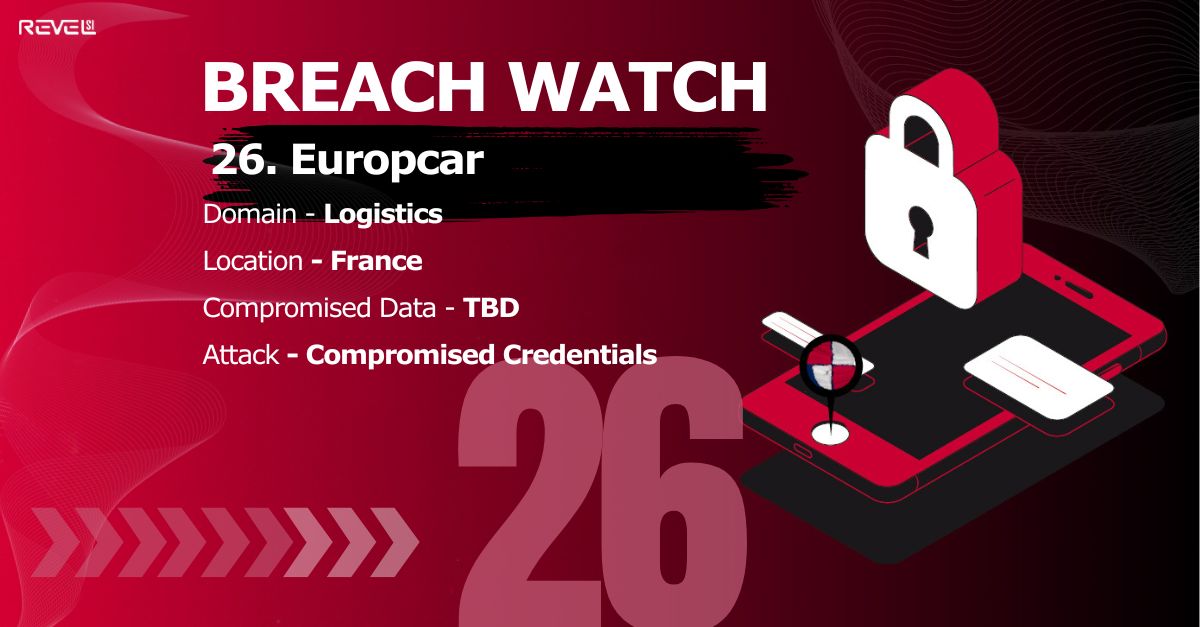Security Breach Alert: Europcar GitLab Compromise

Overview of the Incident
In late March 2025, Europcar Mobility Group—one of the world’s largest vehicle rental companies—suffered a significant cybersecurity breach. A threat actor gained unauthorized access to the company’s self-hosted GitLab repositories, leading to the theft of sensitive internal assets. Among the compromised data were configuration files, SQL data dumps, and the complete source code for Europcar’s Android and iOS applications.
The breach is believed to affect up to 200,000 customers, particularly users of Europcar’s Goldcar and Ubeeqo services. The attacker reportedly demanded a ransom in exchange for not publicly releasing the stolen data, which totals approximately 37 GB.
What Was Stolen
The attacker exfiltrated more than 9,000 SQL files and over 269 .env files. These environment files typically contain critical operational data, including: ◾ Database credentials ◾ API keys ◾ Access tokens ◾ Environment-specific configurations The source code for Europcar’s mobile applications was also taken, exposing the logic and architecture behind key customer-facing platforms.
Potential Impact
While no financial or password-related data has been confirmed as exposed, the risks stemming from this breach are significant. The exposure of internal application logic makes it easier for adversaries to identify vulnerabilities and reverse-engineer the system. Leaked environment files may also allow attackers to pivot into Europcar’s cloud infrastructure, increasing the risk of further compromise.
In addition to direct risks, there is concern about indirect effects. The breach could open the door to supply chain attacks if shared components or third-party integrations are exploited. With customer information such as names and email addresses potentially exposed, the breach could also lead to phishing campaigns or identity fraud targeting Europcar users.
Why This Breach Matters
This incident highlights a growing trend: source code repositories are becoming high-value targets. They contain more than just code—they often include sensitive operational data, embedded credentials, and the keys to an organization’s backend systems. When repositories are compromised, it’s not just intellectual property at risk; it’s the very integrity of an organization's digital infrastructure. A single weak point, such as an exposed key or overly broad access permission, can become the entryway for a major breach.
What Organizations Should Learn
This breach serves as a wake-up call for companies of all sizes, especially those managing software development internally. It underscores the need for secure practices across the entire DevOps lifecycle. ◾First, credentials, tokens, and API keys should never be hardcoded or stored in plain text within repositories. Organizations must use secure secrets management tools and rotate credentials regularly. Access to repositories should be reviewed and restricted to only those who truly need it. ◾Monitoring is also crucial. Repositories should be continuously observed for signs of anomalous behavior, such as large-scale downloads or unauthorized branch access. Detection systems need to be able to trigger rapid incident response workflows. ◾Equally important is having an incident response plan in place that accounts for source code and infrastructure leaks—not just traditional data breaches. This plan must be tested regularly under real-world conditions to ensure it can be executed effectively under pressure. ◾Finally, security should not be an afterthought. It must be integrated into the software development process from the beginning. That means secure coding practices, automated security testing, regular audits, and a development culture that treats security as a shared responsibility.
The Bigger Picture
The Europcar breach is a stark reminder of the new cybersecurity reality: your source code is part of your attack surface. In many cases, it is one of your most valuable and vulnerable assets. Protecting it requires the same level of diligence and defense as protecting customer data or financial systems.
In today’s threat landscape, reactive security is no longer enough. Proactive, preventative measures are essential. Security must be built into the foundation of your operations—because once attackers are in, the damage can be immediate, far-reaching, and incredibly difficult to contain.
Stay Safe, Stay Ahead!
